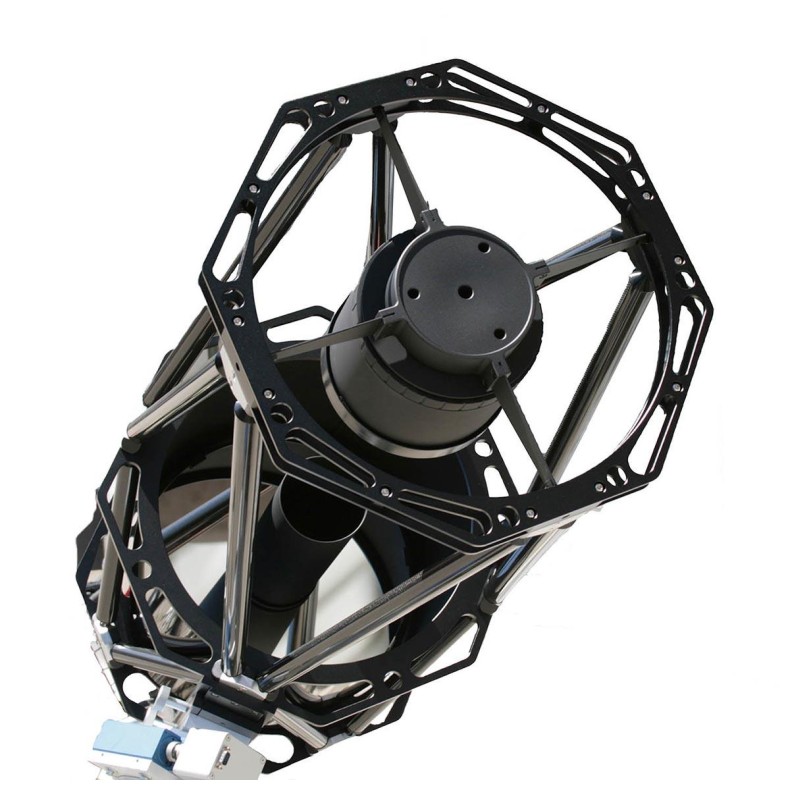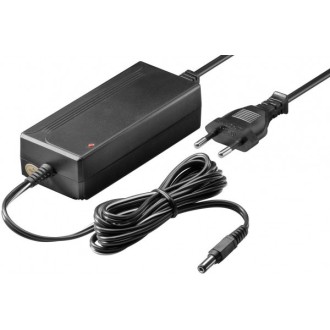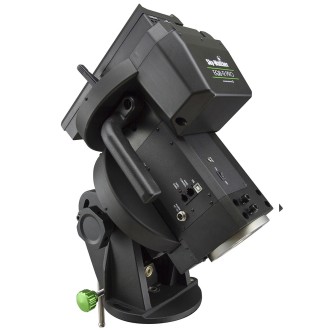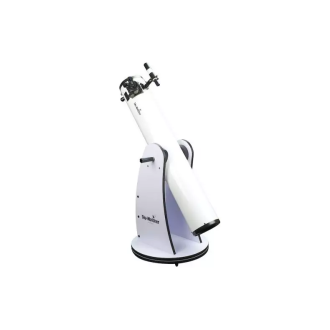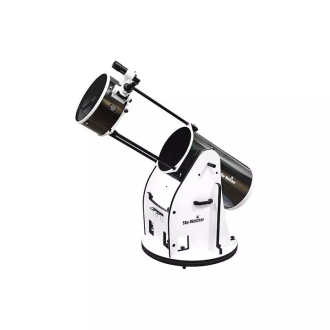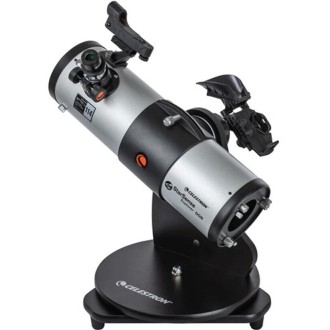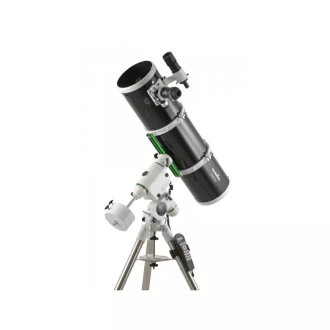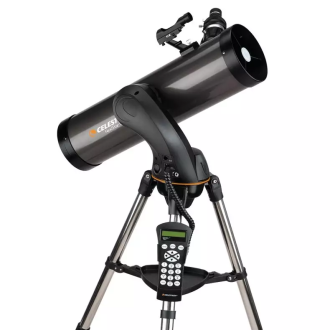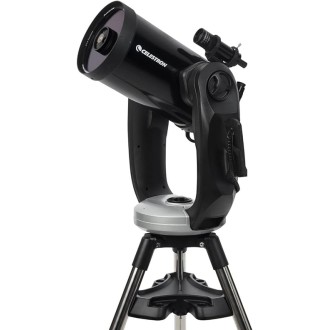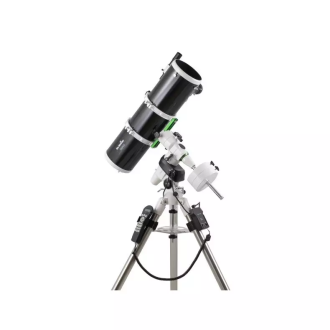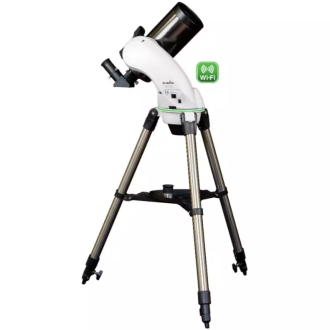Deliver it 7/16 days
Ritchey-Chrétien optical tube TS-GSO RC 14 Gen 2 truss
Telescope TS-GSO 14" f/8 with Ritchey-Chrétien optical design. The best priced astrograph on the market with carbon fiber Truss format. Included in the box:
- RC 14" f/8 astrograph
- 3" focuser with speed reduction 1:10
- 2" to 1.25" reducer
- 2x dovetail type Losmandy
- Primary mirror ventilation
| Carrier | Description | Estimated Delivery | ||
|---|---|---|---|---|
 |
Home delivery - International | Home delivery - International |
Tuesday, 30 December - Tuesday, 6 January |
|

Home delivery - International
Home delivery - International
Estimated delivery:
Tuesday, 30 December - Tuesday, 6 January
Ritchey-Chrétien optical tube TS-GSO RC 14 Gen 2 truss
The GSO RC14 - 14" f/8 Ritchey-Chrétien-Astrograph is a powerful observatory telescope, ideal for astrophotography.
Aperture 14" / 355 mm
Focal length 2854 mm
Focal ratio f/8
Hyperbolic primary and secondary mirror for very high sharpness on the optical axis and a wide, well-corrected field for astrophotography
Mirrors made of fused silica for stable focusing position.
Improved reflectivity of 94 % on primary and secondary mirror for an even brighter image
Faster cooling time due to open design and ventilation of the primary mirror
Two dovetail style dovetail rods are supplied Losmandy, ideal for accessories such as guide telescopes or a piggyback camera mount.
Carbon truss tube: increased rigidity and improved focusing stability for astrophotography
Gen.2: 3" RAP focuser with gear drive and ball bearings for high stability and precision
Extension tubes for the focuser (2 x 25 mm, 1 x 50 mm) are included in the scope of delivery (left picture).
RC correctors for larger sensors from full frame format are optionally available.
new! The primary mirror and the M117 connection for the focuser are decoupled. The focuser can be adjusted independently of the primary mirror (tilt).
Teleskop-Service has optimized this 14" RC telescope especially for astrophotography. The tube is supplied with carbon connecting rods, which are lightweight and have a favorable expansion behavior. The tube weighs about 30 kg. It includes a level dovetail rod Losmandy on both sides. The telescope is primarily designed for observatories. With a length of only 1000 mm, the 14" RC telescope still has room in compact observatories.
The 14" f/8 RC astrograph illuminates a field of about 70 mm well. Without a corrector lens, a field of about 35 mm diameter is obtained with very good correction. It has a pure reflection system, so it does not need an IR cut filter and can also use infrared light from objects, for example. CMOS chips are relatively sensitive in this range. We offer specially designed correctors for larger camera sensors.
Summary of the advantages of the RC telescopes from TS-Optics:
Hyperbolic primary and secondary mirror for a wide, fully illuminated field of view.
Astrophotography with camera sensors up to 30 mm diameter is also possible without corrector. For larger sensors, such as full-format sensors, Teleskop-Service offers ready-to-use corrector solutions.
Improved reflectivity of 94% on the primary and secondary mirror for an even brighter image.
Significantly shorter cooling time due to open design and active ventilation of the primary mirror.
Internal baffles in the tube for even more contrast.
Large rear focuser for correctors, reducers or binoviewers.
High quality 3" RAP focuser with M77x0.75 internal thread on the extraction tube and M74x0.75 external thread and 2"/1.25" receptacles.
Improved Focuser - Gen 2:
The focuser has been significantly improved and offers greater precision and rigidity. Focuses smoothly even under high loads.
Drawbar bearing via stainless steel rail with ball bearings
Rack and pinion adjustment - rack and pinion principle
The adjustment range of the draw tube is 50 mm.
Suitable for EAF motor approach and the like without additional adapter
Additional threads: M82x1 external, M77x1 internal, M74x1 external and M69x1 internal
Astrophotography with the RC telescope:
Thanks to the wide corrected field of view of the RC telescopes, you can, for example, take pictures with SLR cameras up to APS-C format without corrector. Thus, the RC is a pure mirror system for astrophotography. The images are ultra-sharp. To obtain directly focused images, you will need the M117x1 extension tubes, which are included in the scope of delivery. They are screwed between the telescope and the focuser, thus reducing backfocusing. The wide back focus also allows the installation of correctors, which we recommend when using sensors of at least full frame size. You can also install a focal reducer to increase the speed of the RC.
The carbon tube with stainless steel and aluminum connections:
This tube combines the advantages of a carbon tube in terms of thermal stability with the rigidity of a full tube. No need to refocus when the temperature changes.
Primary mirror ventilation for rapid cooling:
Quartz mirrors have no focusing drift problems, but must adapt to temperature; otherwise they give off heat and cause tube vision. Three fans at the rear of the mirror speed up this process.
Quartz primary mirror and secondary mirror:
Quartz does not alter its properties with temperature differences. If the temperature drops slowly during exposure, other materials, such as Pyrex, cause deformation of the mirror and focus shift. This problem does not exist with quartz mirrors. Therefore, focus is better maintained, which is essential for long exposures. Both mirrors have 94 % reflectance. The image is noticeably brighter than with telescopes with only 90 % reflectance.
Advantages of TS RC telescopes for astrophotography:
The TS RC astrographs are true Ritchey-Chrétien telescopes. The Maksutov and Schmidt-Cassegrain have spherical mirrors and need correctors to take advantage of a wide field. With Schmidt-Cassegrain telescopes, aberrations in the field can be seen even when working visually. In most cases, Maksutov-Cassegrain telescopes are so slow that they are not suitable for astrophotography. RC telescopes have hyperbolic primary and secondary mirrors. They are more difficult to manufacture, but offer a significantly sharper field with fewer aberrations.
why is the RC telescope superior to Schmidt-Cassegrain telescopes with correctors?
The Celestron EHD or Meade ACF telescopes need a corrector. In addition, these telescopes have a Schmidt plate on the front side that is prone to condensation. The RC is a pure reflection system with no lenses in the light path. Therefore, all light can be exploited even in the infrared range. The image is brighter and exposure times are shortened. The field of an RC telescope is designed without coma and is relatively flat.
No drift problems with TS RC telescopes:
Telescopes with moving primary mirror focusing often suffer from this problem. The image shifts when focusing or even jumps. Meade and Celestron already have the problem under control, but the effect is noticeable. The TS RC telescopes do not have this problem, since their primary mirror is fixed. Focusing is done by a high quality focuser. An additional advantage is the optimal distance between the primary and secondary mirror, which guarantees the best possible image. If the primary mirror moves relative to the secondary mirror, the optimum distance will almost never be achieved.
Ritchey-Chrétien optical tube TS-GSO RC 14 Gen 2 truss

